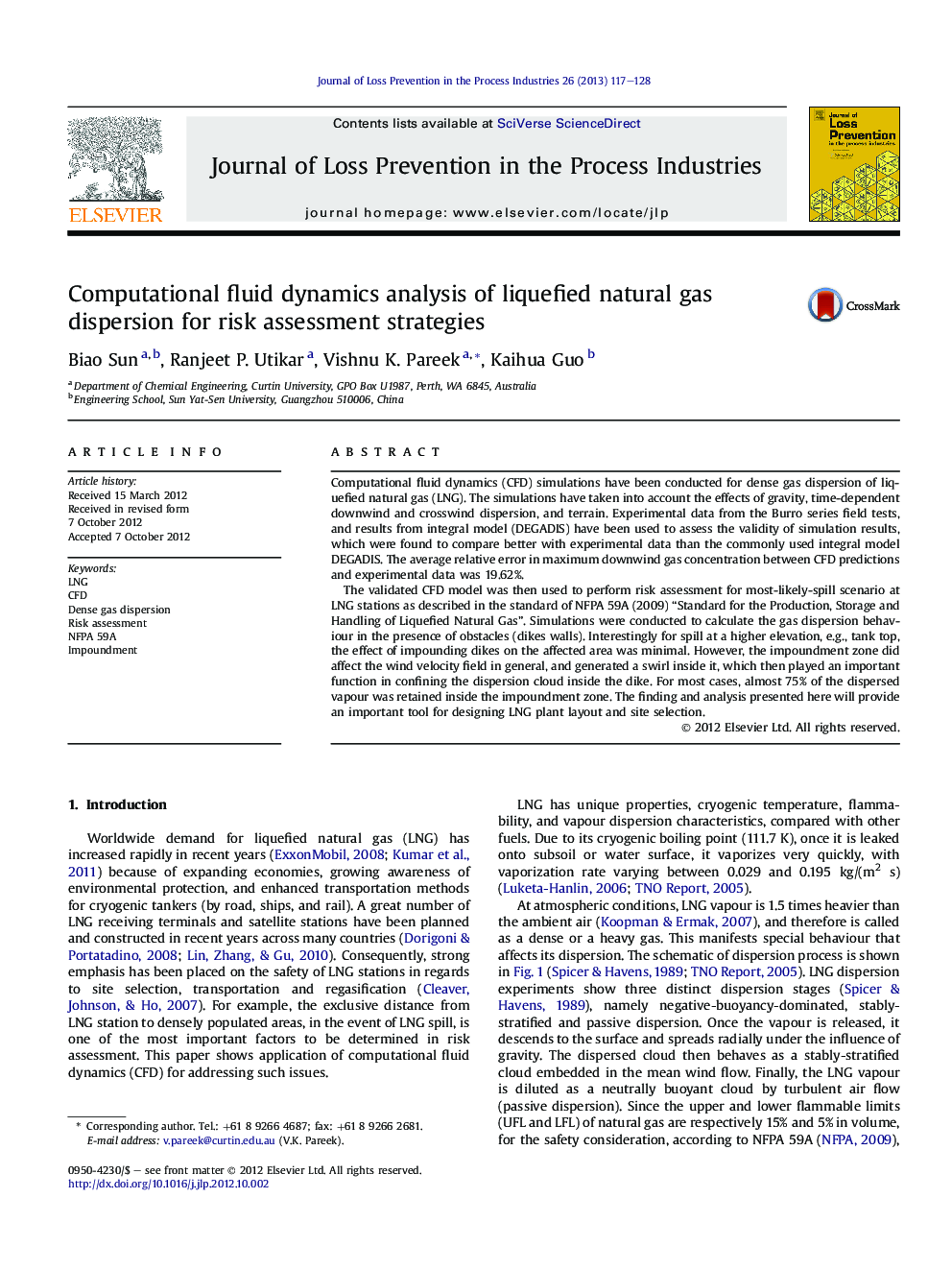| Article ID | Journal | Published Year | Pages | File Type |
|---|---|---|---|---|
| 586956 | Journal of Loss Prevention in the Process Industries | 2013 | 12 Pages |
Computational fluid dynamics (CFD) simulations have been conducted for dense gas dispersion of liquefied natural gas (LNG). The simulations have taken into account the effects of gravity, time-dependent downwind and crosswind dispersion, and terrain. Experimental data from the Burro series field tests, and results from integral model (DEGADIS) have been used to assess the validity of simulation results, which were found to compare better with experimental data than the commonly used integral model DEGADIS. The average relative error in maximum downwind gas concentration between CFD predictions and experimental data was 19.62%.The validated CFD model was then used to perform risk assessment for most-likely-spill scenario at LNG stations as described in the standard of NFPA 59A (2009) “Standard for the Production, Storage and Handling of Liquefied Natural Gas”. Simulations were conducted to calculate the gas dispersion behaviour in the presence of obstacles (dikes walls). Interestingly for spill at a higher elevation, e.g., tank top, the effect of impounding dikes on the affected area was minimal. However, the impoundment zone did affect the wind velocity field in general, and generated a swirl inside it, which then played an important function in confining the dispersion cloud inside the dike. For most cases, almost 75% of the dispersed vapour was retained inside the impoundment zone. The finding and analysis presented here will provide an important tool for designing LNG plant layout and site selection.
► Computational Fluid Dynamics (CFD) model has been applied for modelling of dispersion of LNG. ► The CFD model has been validated using LNG field test which showed a good agreement with relative error being less than 20%. ► The validated model was used to assess the dispersion scenario with and without impoundments.
